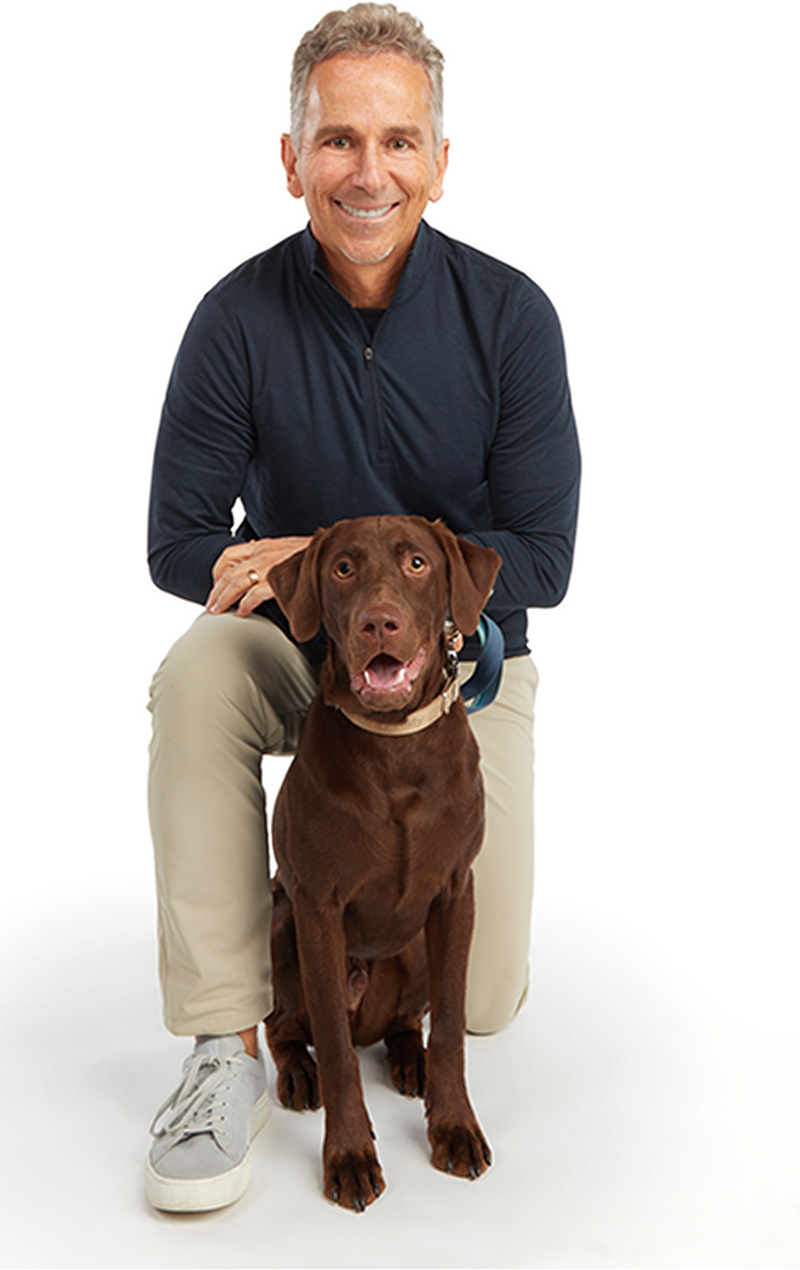Hello, pet parents!
Performing a blood test on your dog is a necessary step to maintain their health and well-being. By doing the blood tests, it is possible to identify if your pet is facing any kind of illness. Just as important as the test itself is the care with which it's done. Drawing blood may seem simple, but it takes skill, patience, and a gentle touch to ensure your dog feels safe and comfortable.
When it comes to how to draw blood from a dog, it’s essential to have a certified veterinary technician handling the procedure. Certified technicians are specially trained in venipuncture techniques, ensuring that the process is not only accurate but also reduces stress and minimizes the risk of injury to your dog.
At Pad Home Pet Services, our goal is always to combine medical expertise with compassion, so your furry family member feels cared for every step of the way.
Key Takeaways
-
Blood tests are essential to conduct for monitoring overall health
-
Collecting blood from the vein can be useful for removing extra blood cells
-
Skilled veterinary technicians are trained to handle pets gently and efficiently
Why Dogs Need Blood Draws
Blood draws are necessary for dogs because of the data that can provide useful insights about the immune system response and blood clotting ability. This information would help a veterinarian establish a baseline as a point of reference for future use.
The following are also the reasons for the importance of blood draws for veterinarians:
1. Routine Health Screenings
Blood tests, or routine lab work and blood work, are essential for monitoring overall health in dogs and cats and detecting issues early. A small blood sample obtained by a veterinarian via venipuncture (from a vein in dogs, such as the cephalic vein or jugular vein) can uncover infections, anemia, liver disease, kidney dysfunction, or abnormal blood glucose on a CBC/chemistry panel. Catching these issues early allows quicker intervention, giving your pup the best chance at a full recovery during future blood draws.
2. Pre-Surgical Assessments
Ensuring safety before anesthesia is key in veterinary care. Pre-op blood panels (CBC, biochemistry panel, glucose) confirm liver and kidney function, and your vet will draw blood from the jugular vein or cephalic vein using sterile technique. After the blood draw, they'll apply pressure to the puncture site with a cotton ball or gauze to stop any bleeding, providing peace of mind that your pet is ready for the procedure.
3. Chronic Condition Monitoring
If dogs are already managing a chronic condition, routine blood work helps ensure they aren't facing severe complications. Regular blood draws for blood glucose (diabetes), kidney values, or thyroid function let your veterinarian adjust the care plan based on the amount of blood needed for testing. Ongoing monitoring supports safer future blood draws and better outcomes.
Common Venipuncture Sites in Dogs
Venipuncture sites are the locations on the body of a dog where you can carry out the procedure of inserting a needle to take blood from a vein. Collecting blood from the vein can be useful for laboratory testing and removing extra blood cells from the blood ( for the treatment of blood disorders) (Source: National Cancer Institute).
Veterinary professionals take great care to keep dogs calm and comfortable, offering gentle handling and reassurance throughout the process. Our goal is always to make the experience as stress-free as possible, so your furry friend feels secure while getting the care they need.
Here is a list of common venipuncture sites for dogs.
-
Jugular Vein (Neck): Ideal for larger volumes; requires proper restraint.
-
Cephalic Vein (Front Leg): Accessible and commonly used for smaller samples.
-
Lateral Saphenous Vein (Outside of Rear Leg): Preferred for anxious dogs; offers good access.
-
Medial Saphenous Vein (Inside of Rear Leg): Less commonly used; suitable for specific cases.
Provided below is a table that can be useful to compare the venipuncture sites based on factors for different dog temperaments:
|
Venipuncture Site |
Ease of Access |
Volume Capacity |
Suitability for Dog Temperament |
Common Usage |
|
Jugular Vein (Neck) |
Easy with proper restraint |
Large volumes (ideal for multiple tests) |
Requires calm, well-restrained dogs |
Preferred for large blood samples, surgeries, and when multiple tests are needed |
|
Cephalic Vein (Front Leg) |
Easy and quick |
Moderate volumes |
Suitable for most dogs, less invasive |
Common for smaller blood samples, frequent monitoring |
|
Lateral Saphenous Vein (Outside of Rear Leg) |
Moderate access, may require mild restraint |
Moderate volumes |
Ideal for anxious dogs or those that struggle with other sites |
Often used for nervous or aggressive dogs, especially in home settings |
|
Medial Saphenous Vein (Inside of Rear Leg) |
Difficult access (limited visibility) |
Small volumes |
Suitable for dogs with specific conditions or difficult temperament |
Less commonly used but ideal for specific cases, such as small blood draws in less cooperative pets |
The Blood Draw Procedure: Step-by-Step
For better canine health, a professional vet tech ensures that the blood draw procedure is followed step by step.
Check these steps below and learn how your dog is taken care of with safety and precaution with our professional services.
-
Preparation: A veterinary technician first gathers all the necessary equipment and takes a moment to calm and reassure your dog, helping them feel safe.
-
Restraint Techniques: They then position your dog in a way that is secure yet comfortable, ensuring they feel supported throughout the process.
-
Site Selection and Cleaning: The vet tech will then choose the best vein for the procedure and gently clean the area to maintain hygiene.
-
Needle Insertion: With skill and a steady hand, they will carefully insert the needle while keeping your dog calm and relaxed.
-
Sample Collection: They will then draw the blood efficiently, handling the sample with care, while offering gentle words or strokes to soothe your pet.
-
Post-Procedure Care: In the end, the vet will apply gentle pressure to the site, monitor your dog, and may give them praise or a treat for being brave!
Safety and Comfort: Minimizing Stress During the Procedure
Minimizing stress during a blood draw is crucial for the well-being of the dog. A calm experience not only helps ensure accurate test results but also makes the procedure easier and safer for both your pet and you. Skilled veterinary technicians are trained to handle pets gently and efficiently, creating a soothing environment that reduces anxiety and builds trust. When done correctly, the stress of the next time this may need to be done is reduced greatly.
Calming Techniques
We use pheromone products to reduce anxiety in dogs. Pheromon products, such as diffusers or sprays, have chemicals that mother dogs produce to comfort their puppies (Source: California Veterinary Medical Association). Gentle, reassuring handling throughout the procedure helps your dog feel safe and cared for. Another calming technique would be to offer toys or treats so that the dog has a positive association with the clinic. Also, we use gentle handling techniques that help comfort an animal in general.
Pain Management
Instead of exerting excessive strain during the procedure, we know that it is better to handle it with care. For large and aggressive dogs, it is better to consider using head collars or harnesses to control them during the procedure. A vet tech understands the body language of the dog to ensure that they are not making it feel pain. Adjusting the approach in response to these signals helps make the procedure as stress-free as possible.
Post-Procedure Monitoring
After the procedure, an expert vet tech always observes the pattern of any adverse reactions. This can be helpful in understanding which handling method best suits the dog.
By keeping stress low, they support your dog's emotional and physical health, which is especially important for pets with pre-existing conditions. A calm, gentle approach ensures your furry friend feels safe, cared for, and loved throughout their visit.
FAQs: Addressing Common Concerns
How much blood can safely be drawn from a dog?
There should be a general limit on how much blood can be drawn from a dog. The blood drawn cannot exceed 1% of the body weight in a dog for a two-week period.
What should I do if my dog is anxious about the procedure?
We usually calm the dog with various techniques, such as using toys or using pheromone products. If the dog’s anxiety gets out of control, then we can calm it down by massaging.
Are there risks associated with blood draws?
Yes, there are some risks with blood draws. Pain when the needle is inserted into a dog's body. Some dogs may feel dizzy, nauseous, or even faint. You can learn more about bruising (hematoma), which occurs when blood leaks out of a blood vessel into the surrounding tissue, causing pain. However, these risks are easily controlled with experts administering them, like Pad.
How soon will I get the results from the blood test?
You can get the results within a few days or even a week. It depends on how urgent it is and whether further examination is needed from the blood test.
Can I request an at-home blood draw for my dog?
Yes, it is easily done at home with mobile veterinary services. The services available involve hiring a licensed veterinary technician or vet. He or she will visit your home to collect the sample, ensuring your convenience.
Conclusion: Ensuring Your Dog’s Better Health with Professional Blood Draws
Blood draw is important for a dog to ensure that it is safe from any unknown diseases. After examining the blood test results, we ensure that the dogs are feeling calm and relaxed. A veterinary technician ensures the creation of a safe space for the dogs to conduct the blood draws.
At Pad Home Pet Services, we know how important blood draws can be for your pet. Our veterinary technician pet nurses perform blood draws on dogs, cats, and other pets in the comfort of your home, ensuring a stress-free experience for your pet.
-
Experienced Veterinary Technicians: Skilled in performing safe, accurate blood draws.
-
At-Home Convenience: Avoid the stress of the clinic and keep your pet comfortable, plus, saving you time. You can be there or we can be there for you.
-
Comprehensive Health Check: From organ function to red and white blood cells, we provide a full picture of your pet's health, along with our 8-Point Health Check.
Reach out to us today. Contact us at (347) 767-7641.

